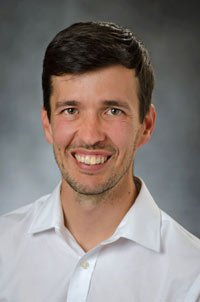Athletic trainers: keeping a watchful eye on the community’s student athletes
 It’s that time of year again — back to school, and for a lot of students, back to participating in their favorite high school team sports.
It’s that time of year again — back to school, and for a lot of students, back to participating in their favorite high school team sports.
Along with looking forward to being spectators and boosters at the games, parents understandably are hoping that their son or daughter will not only be successful but will make it through the season without any major injuries. Injuries are a fact of life, especially in contact sports like football and soccer. They can, however, be minimized or even prevented, which is where my role as an athletic trainer comes in.
Athletic trainers are healthcare professionals, with bachelor’s or master’s degrees in the field, supervised by physicians and working in a variety of settings including college and professional athletics, the military, the performing arts, and, in my case, high school sports. Since 2015, Marin General Hospital has provided athletic trainers to work with student-athletes at three local high schools: San Rafael High School, Terra Linda High School, and Tomales High School.
You will find us on the sidelines before and after practice and before, during and after all games. Our training helps us recognize and evaluate injuries should one happen and to provide first aid or emergency care. We provide day-to-day rehabilitation, manual therapy, and protective devices when needed. Marin General Hospital athletic trainers also keep track of pre-season physicals to help coaches determine an athlete’s readiness to play a sport and monitor those athletes who may be at higher risk for sports-related injuries or emergencies.
Especially important, as we all become more aware of the prevalence and danger of concussions in young athletes, is the athletic trainer’s supporting role in concussion management. If a player sustains a brain injury, we evaluate whether a possible concussion has occurred. If so, we make arrangements for the athlete to be further evaluated by a physician and see that the athlete follows the recommended rest and recovery program. While we can’t eliminate concussions altogether, we can manage their impact to young brains. Recognizing a concussion has occurred is important since studies now indicate that a second impact and repeated concussions may lead to more serious injury.
Although much of what we do is in the moment, while a game is being played, we can also play a big role in reducing the risk of injury by ensuring that athletes are engaged in a well-rounded strength and conditioning program. Many high school athletes are just learning what their bodies are capable of and often feel impervious to injury. This can lead them to either feel they don't need to focus on strength and conditioning or they may go the other way and work out on their own using generic workout plans or whatever they may see on YouTube. However, for student-athletes who want to perform well, prevent injury, maybe go on to college sports or just be a fit and healthy adult, ensuring proper form, strength progression, and functional training are the key.
During this past spring semester at Tomales High School, I had a chance to put my strong belief in the power of strength training and conditioning into action. In an hour-long after-school program, I worked with both male and female student-athletes on ways to increase their strength through weightlifting and to learn the basics of good body mechanics when doing exercises and when running, jumping or other sports-related movements. We started with a small group at first, but gradually the word is beginning to spread and soon we are beginning to see attendance grow as students come back time after time to work on their personal fitness goals. The fall semester starts soon and I’m looking forward to seeing some of the results of this first class, both in terms of athletic performance and injury prevention.
I have a wonderful job. I get to continue my love for sports in my work with coaches and athletic directors. I am able to practice my profession backed up with the professional expertise and resources at Marin General Hospital. Most satisfying, I like knowing that through injury prevention and educating athletes and other students about the basics of fitness and health, I will have done something of great value to their future good health and well-being.

